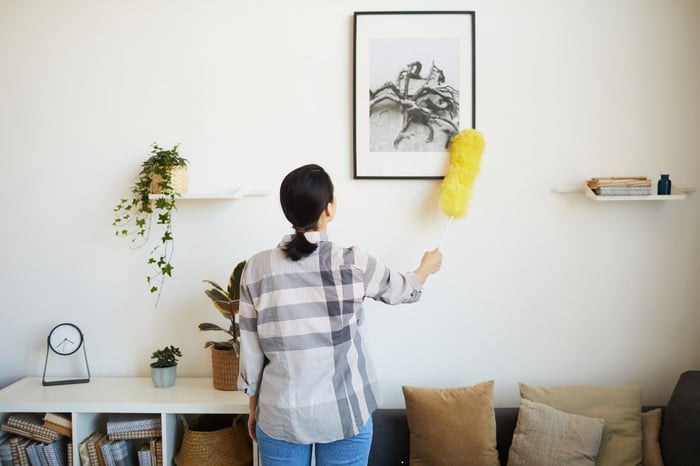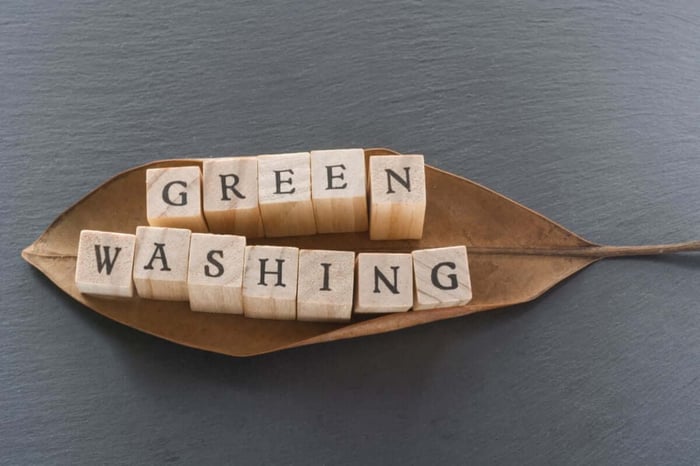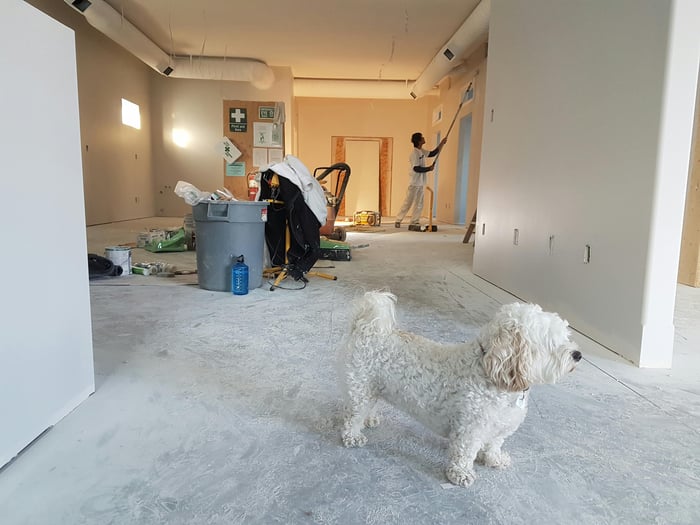
Dry vs. Wet Dusting: How to Choose the Best (and Safest) Method for Your Home
Table of Contents
Dust is a silent invader. It gathers on bookshelves, clings to baseboards, and collects behind furniture, often without us noticing until it’s thick enough to write in (yuck!). But did you know that the way you dust, dry or wet, can impact not only how clean your home appears, but also how healthy it is?
Let’s explore the pros and cons of dry dusting versus wet dusting, and why choosing a nontoxic cleaning method matters more than ever especially if you have pets, kids, or allergies.
What Is Dust, Really?
Dust isn’t just harmless debris. It’s actually a mix of dead skin cells, fabric fibers, pollen, pet dander, bacteria, and even microscopic plastic particles. In homes that use synthetic cleaners or air fresheners, dust can also trap toxic residues. These pollutants can trigger allergies, irritate the skin, and even affect respiratory health.
That’s why dusting should be more than just a chore, it’s part of maintaining a truly healthy, breathable home.
Dry Dusting: Quick but Often Ineffective
Dry dusting usually involves using a microfiber cloth, feather duster, or electrostatic tool to wipe surfaces. While it’s a fast and easy way to tidy up, dry dusting often just shifts particles around and who wants that. Unless you're using a cloth that effectively traps dust, most of it ends up back in the air or resettling elsewhere.
Pros of Dry Dusting:
- Quick and convenient for light surface cleaning
- Ideal for delicate items like lampshades or picture frames
- Doesn’t require waiting for surfaces to dry
Cons:
- Can stir dust into the air, worsening indoor air quality
- Less effective at removing sticky or oily residues
- Doesn’t sanitize or neutralize allergens
Wet Dusting: A Deeper Clean
Wet dusting uses a slightly damp cloth and a safe, non-toxic solution to actually lift and trap dust. It’s the preferred method for cleaning heavily soiled areas, baseboards, vents, or anywhere dust tends to accumulate and stick.
By dampening your cloth with an eco-friendly cleaner, you help lock dust in place, preventing it from becoming airborne again. This is especially important for families with small children, pets, or allergy sufferers.
Pros of Wet Dusting:
- Traps and removes dust more effectively
- Helps eliminate allergens, germs, and bacteria
- Leaves surfaces truly clean and refreshed
Cons:
- Requires more time and effort
- Surfaces may need to dry before being touched
Choosing the Right Cleaning Product
If you're reaching for a dusting spray, take a close look at the ingredients. Many conventional products contain synthetic fragrances, harsh preservatives, or petroleum-based solvents. These chemicals can irritate the skin, eyes, and lungs and they often leave behind a residue that attracts even more dust.
Instead, look for a nontoxic cleaning solution made from plant-based ingredients and beneficial bacteria. Probiotic formulas are an innovative way to clean: they not only break down grime but also continue to work at the microscopic level, promoting a healthy balance of good microbes on surfaces.
Why Hyve’s Probiotic Cleaner Is Perfect for Dusting
At Hyve, we believe your home should be a safe haven. That’s why our pet/kid/kitchen cleaner is made with only thoughtfully selected, natural ingredients including probiotics that help fight bad bacteria and support your immune system.
When used for wet dusting, Hyve’s multi-surface formula:
- Traps and removes dust without harmful fumes
- Breaks down the biofilm where allergens and germs hide
- Leaves a fresh, calming scent from essential oils like lavender and bergamot
- Is gentle enough for nurseries, pet areas, and high-touch surfaces
Plus, with no harsh chemicals, there's no need to worry about little hands or paws coming into contact with freshly cleaned surfaces.
How to Dust the Nontoxic Way
Whether you’re dry or wet dusting, these tips will help you get the job done more effectively:
- Work top to bottom. Always start with higher surfaces (like shelves or ceiling fans) so dust doesn’t fall on areas you’ve already cleaned.
- Use microfiber or reusable cloths. They trap particles better than paper towels and are more eco-friendly.
- Wet dust with purpose. For best results, lightly spray your cloth with an eco-friendly cleaner like Hyve’s probiotic formula before wiping.
- Don’t forget hidden zones. Clean behind appliances, under furniture, and inside vents – these are areas where dust loves to hide.
- Dust regularly. Set a weekly or bi-weekly schedule to reduce buildup and keep allergens at bay.
While dry dusting has its place for quick touch-ups, wet dusting with a nontoxic cleaning solution is the best way to truly remove dust and allergens from your home. Especially if you’re looking for a pet safe cleaner or want to avoid exposing your family to harsh chemicals, switching to a probiotic, eco-friendly cleaner like Hyve makes a big difference.
A clean home doesn’t just look better it feels better. And with Hyve, you can clean confidently, knowing you're supporting a healthier planet and a healthier you.






